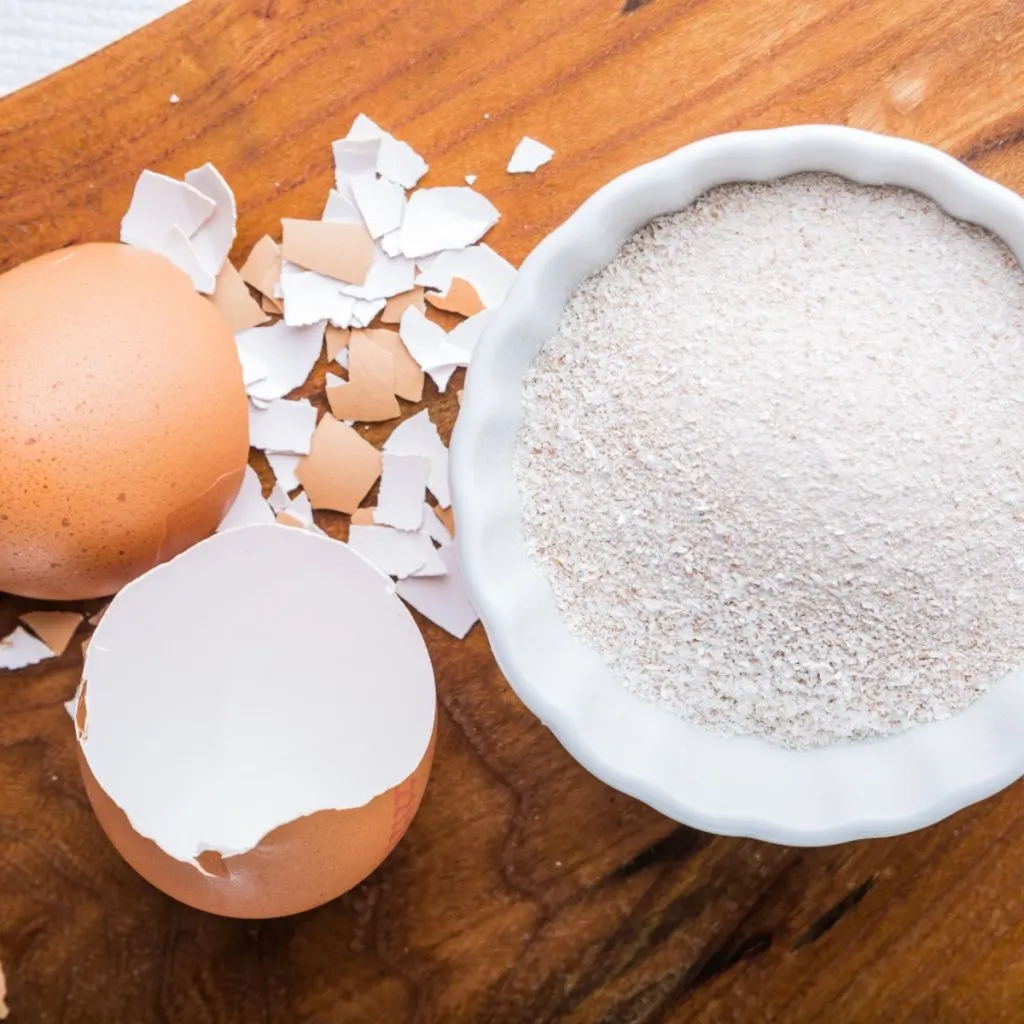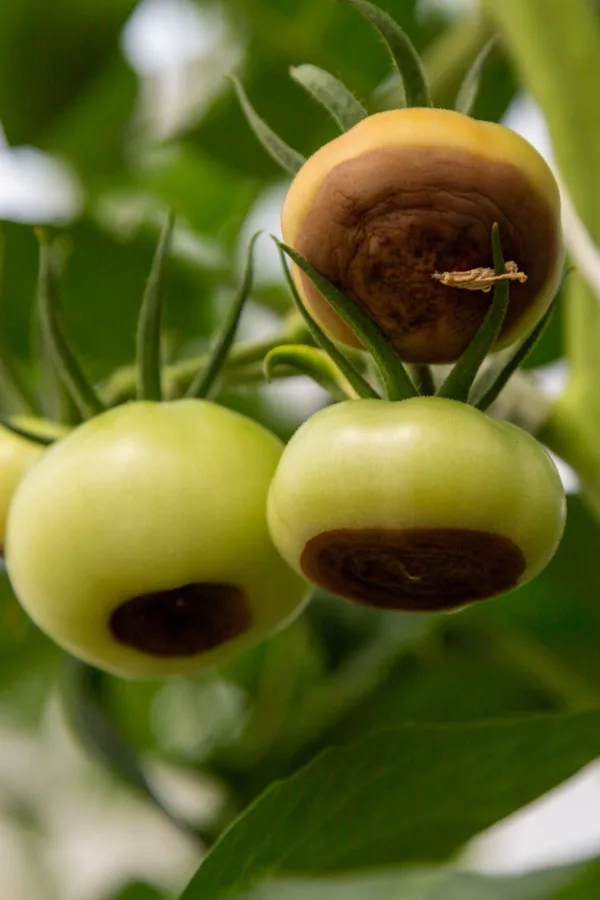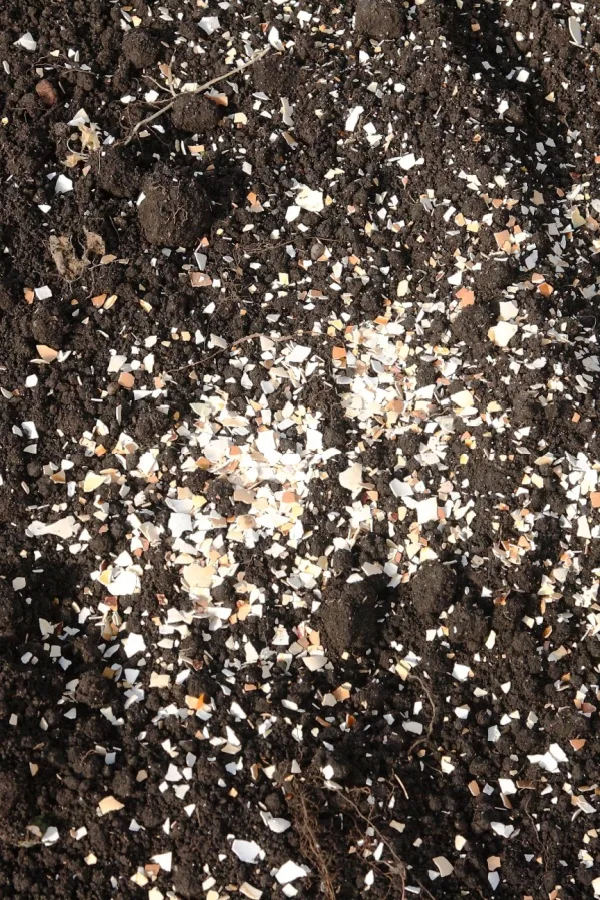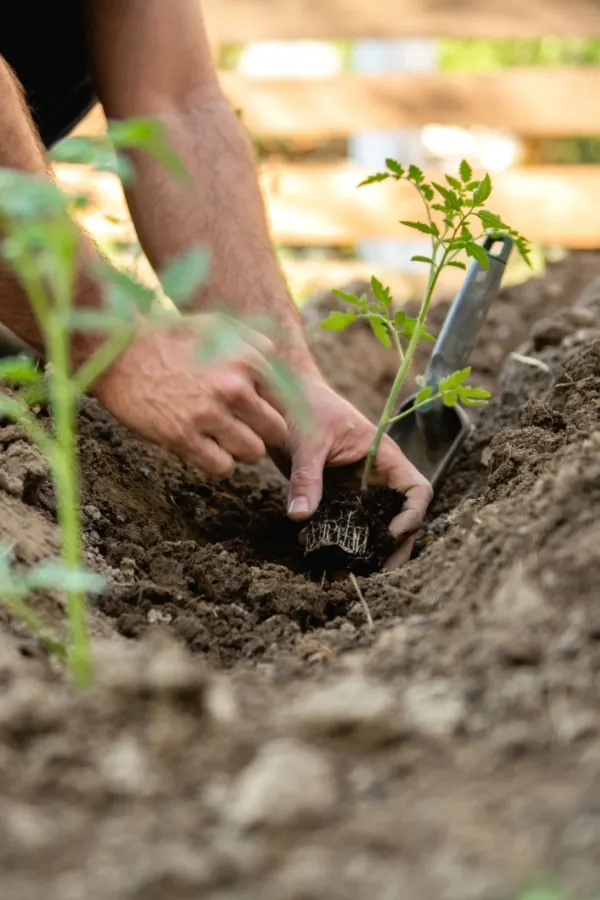Did you know that planting eggshells in the planting hole of your tomato plants is one of the best ways to get your tomatoes off to a fast, healthy start? It’s true – especially if you use them in just the right way!
Not only are eggshells safe and simple to use, they also happen to be extremely easy to come by as well. Whether it’s from cracking eggs for a morning omelet, or making cakes, pancakes and more, most households have no problem finding a steady supply of eggshells.
Although most sadly end up in the trash can, this basic and natural byproduct is perfect for making a huge difference when it comes to growing healthy tomatoes!

Eggshells are loaded with minerals and nutrients like calcium, magnesium, and phosphorous. And these nutrients and other trace elements can be extremely helpful to power tomato plants and the tomatoes they produce.
But that’s not all – eggshells can help your tomatoes in other ways too. Eggshells also help deter some pests that often love to feast on tomato crops. With growing your best crop of tomatoes in mind – here’s a look at all of the benefits of using eggshells when growing tomatoes – and exactly how to use them to your advantage!
Why And How To Use Eggshells To Help Tomato Plants
Benefits Of Eggshells
Egg shells are composed mostly of calcium. In fact, around 95% of the shells are made up of calcium carbonate. This mineral is vital for growing strong and healthy tomato plants all throughout their lifecycle.
One of the biggest benefits of using eggshells is for the boost of calcium they provide – and how it helps to prevent blossom end rot. Blossom end rot is not a disease but a result of a lack of calcium in the soil.
When calcium is lacking or if plants struggle to absorb calcium, the blossom end of the fruit turns brown and starts to rot. This rotting ends up spreading until the affected tomato is ruined before it can even mature. If the lack of calcium is bad enough, the plant’s entire harvest can be reduced to zero.

In addition, a plant uses calcium to help create the cell structure within the stems, branches, and foliage of plants. Without it, tomato plants will simply struggle to reach their full growth potential.
Tomatoes also use calcium to improve their pollen germination and enhance enzyme production. When tomato plants are lacking in calcium, they also will struggle to produce blooms and thus fruit to harvest. See How To Prevent Blossom End Rot On Your Tomatoes.
Signs Of Calcium Deficiency In Tomato Plants
In addition to blossom end rot, you can also see signs of calcium deficiency by leaf curling. The edges of the leaves will start to turn upright and inwards. A lack of magnesium can also cause leaf curling as well. Thankfully, eggshells contain magnesium as well as calcium to help solve the issue.
Calcium deficiencies can also cause the stems of plants to be brittle or prone to breakage. Healthy plants should be able to easily support the weight of ripening fruit and stand up to typical weather conditions.
Lastly, if plants are able to produce fruit at all, they are often misshapen, small, and underdeveloped without the right amount of calcium and other beneficial nutrients and minerals. It’s pretty easy to see how all of the calcium in egg shells can be beneficial to your plants.
But here’s the key – you have to use those eggshells in a certain way to help your plants. Especially this year’s plants.
Crushed vs Pulverized Eggshells
In order for eggshells to be effective in helping tomato plants in the same season they are used, you need to turn them into a powder. Unfortunately, whole eggshells or even crushed eggshells take forever to break down.

Placing whole or even partially crushed shells might allow for a few trace elements and nutrients to absorb into your soil and tomato plants this year, however, the amount will be so small it can’t really help much. Because of this, you need to first pulverize or grind the shells into a fine powder to be really useful.
The powdered eggshells absorb fast into the soil – and can then soak into the roots of tomato plants quickly as well. The good news is making egg shells into a powder is a breeze.
To turn them into powder, simply use an inexpensive coffee grinder or high-powered food processor. In just a few seconds, the eggshells are the perfect consistency of a fine powder – and ready to go to work for your plants. Product Link: Amazon Basics Stainless Steel Electric Coffee Bean Grinder
Using Powdered Eggshells
You can use powdered eggshells in two main ways to help a tomato plant’s growth. The first is at the time of planting – and the next is any time throughout the growing season as an additional power boost.

Before you place the tomato transplant into the ground, add two tablespoons of powdered eggshell powder to the soil mix in your planting hole. It’s also a great idea to add worm castings, coffee grounds and compost to that planting hole as well. See: How To Plant Tomatoes For Big Success!
The eggshells in the bottom of the hole will start to break down and help power the plant right where it needs it most – at its roots. Used along with compost, spent coffee grounds, and worm castings, you are setting your plants up for a strong and healthy growing season right off the bat.
The other time to use powdered egg shells is right after planting or any time throughout the growing season. You can use the powdered shells as a top dressing around the base of each plant.
Simply sprinkle on a layer of powdered egg shells around the root zone of each plant. Now, every time it rains or you hand water, the nutrients and minerals will leach out. And as they soak down into the surrounding soil, they once again help your tomato plants.
Using Crushed Eggshells
There is one instance where crushed eggshells work better than powered shells, and that is with pest control. Crushed eggshells can be an excellent way to protect tomato plants from slugs and snails.
Simply create a 1-inch ring around the base of each plant. Since the edges of the crushed shells are sharp and jagged, they will cut the softer bodies of the slugs or snails and prevent them from getting to the plant’s stem.
Here’s to growing strong and healthy tomato plants using the power of eggshells!
I Grow Tomatoes
Follow Our Facebook Page For Even More Great Tomato Growing Tips! I Grow Tomatoes Facebook Page
I Grow Tomatoes is a website created for those who love all things about tomatoes – from planting and growing – to cooking and canning! We publish two articles every week, 52 weeks a year. Sign up today to follow via email! This article may contain affiliate links.
